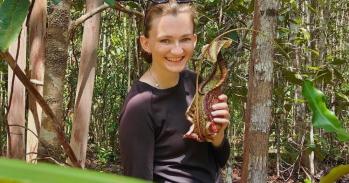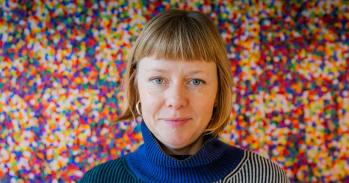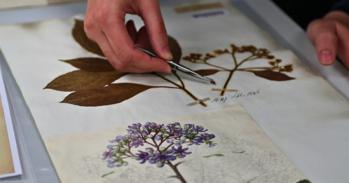Tiny sketchbooks that bring to life one of the most famous voyages in history have been digitised and made available online for the first time.
Tiny sketchbooks that bring to life one of the most famous voyages in history have been digitised and made available online for the first time.
Darwin described the Beagle voyage as the most formative experience of his life and to see it through the eyes of one of his companions is a very vivid reminder of the reality of that journey.
Alison Pearn
The intricate pencil drawings and watercolours in the sketchbooks were made by Conrad Martens, shipmate to Charles Darwin as they travelled around South America on the voyage of HMS Beagle.
Now, for the first time, all of Martens’ Beagle sketches have been made freely available online through Cambridge University Library’s Digital Library: cudl.lib.cam.ac.uk and can also be seen in the photo film above.
Martens made the drawings between the summer of 1833 and the early months of 1835. Cambridge University Library owns his two sketchbooks from this period and has made the above audio slideshow to celebrate their addition to the Digital Library.
“These drawings were made almost two centuries ago but even now, they still really vividly bring to life one of the most famous voyages in the world and arguably the most famous in the history of science,” said Dr Alison Pearn, Associate Director of the Darwin Correspondence Project.
“Each of these pages is only 14cm by 20cm. It’s wonderful that everyone now has the opportunity to flick through these sketchbooks in their virtual representation and to follow the journey as Martens and Darwin saw it unfold.”
The first sketchbook begins just before Martens heard that the Beagle was looking for a new ship’s artist, capturing street life in Montevideo in August 1833. The later sketches give a sense of how hard and difficult the journey must have been both on sea and land in uncharted territory.
Martens did not have much time to make his sketches and the notebooks are littered with hastily-scribbled notes to himself about colours, textures and the geology of the landscapes before him.
“Darwin described the Beagle voyage as the most formative experience of his life and to see it through the eyes of one of his companions is a very vivid reminder of the reality of that journey,” added Pearn. “Martens' sketches are a visual counterpart to Darwin’s letters home. Both bring to life a really remarkable adventure in a vast and remote part of the world.”
The text in this work is licensed under a Creative Commons Licence. If you use this content on your site please link back to this page. For image rights, please see the credits associated with each individual image.





